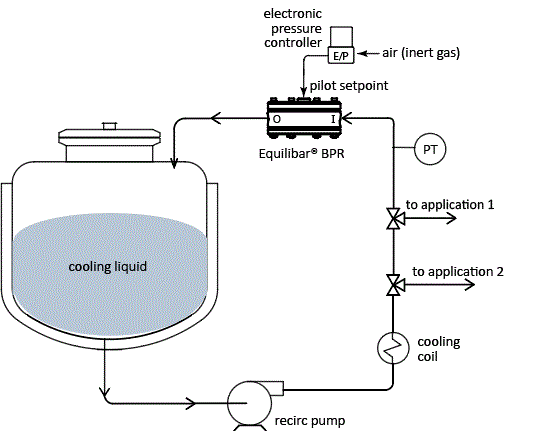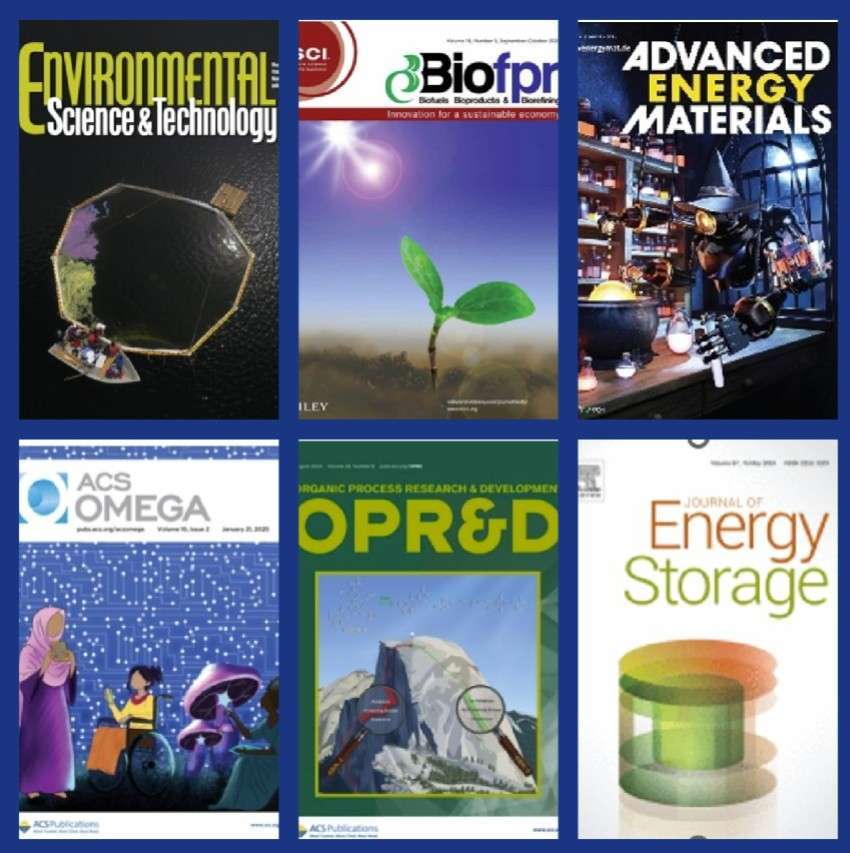Over the past year, Equilibar’s engineers have reported an increase in inquiries regarding process control of liquid cooling loops. These systems–also called chiller loops–are used to circulate cooling fluids to keep a process at a desired temperature. They play an important role in semiconductor manufacturing as well as hydrogen fuel cells, brewing and fermentation chambers, and other applications.
In many processes—such as thermal testing of processors and other semiconductor components—exceptionally precise control of the coolant loop is required, often within a fraction of a degree.
To maintain the needed temperature, both flow and pressure of the cooling liquid need to be accurately controlled. This is often accomplished by putting a back pressure regulator or pressure sustaining valve in a recirculation loop with a pump.
In many situations, one cooling loop may feed multiple machines so that the amount of liquid being recirculated back to the holding tank will vary depending on the number of machines online at any given moment. These scenarios require a control system that can handle a wide range of flow rates to accommodate changing demands. 
The direct sealing diaphragm technology of Equilibar fluid control devices offers multiple benefits for liquid cooling loops. These devices have a wide Cv range and a turndown of 100:1 (or more in some configurations), which allows for stable control of the cooling loop pressure even as the flow rate varies.
An additional advantage is that Equilibar devices are easily automated with an electronic pilot regulator. Their multi-orifice design also prevents cavitation damage.
Using Equilibar Technology to Directly Control Flow or Temperature in a Cooling Loop
Equilibar devices can also be used as a control valve to directly control the flow in a cooling loop. When set up in a PID control loop with a flow meter and an electronic pilot pressure regulator, an Equilibar valve works extremely well to control precise flow.
Temperature control is also possible. An article published in the November 2020 edition of Flow Control Magazine explains how Equilibar valves can use combined pressure and flow control schemes to regulate not only temperature, but other parameters such as level, pH, and even coating weight. 
Read more about the potential advantages of Equilibar technology for liquid cooling loops on our application page. And as always, we invite you to contact one of our application specialists with your particular fluid control challenge.



